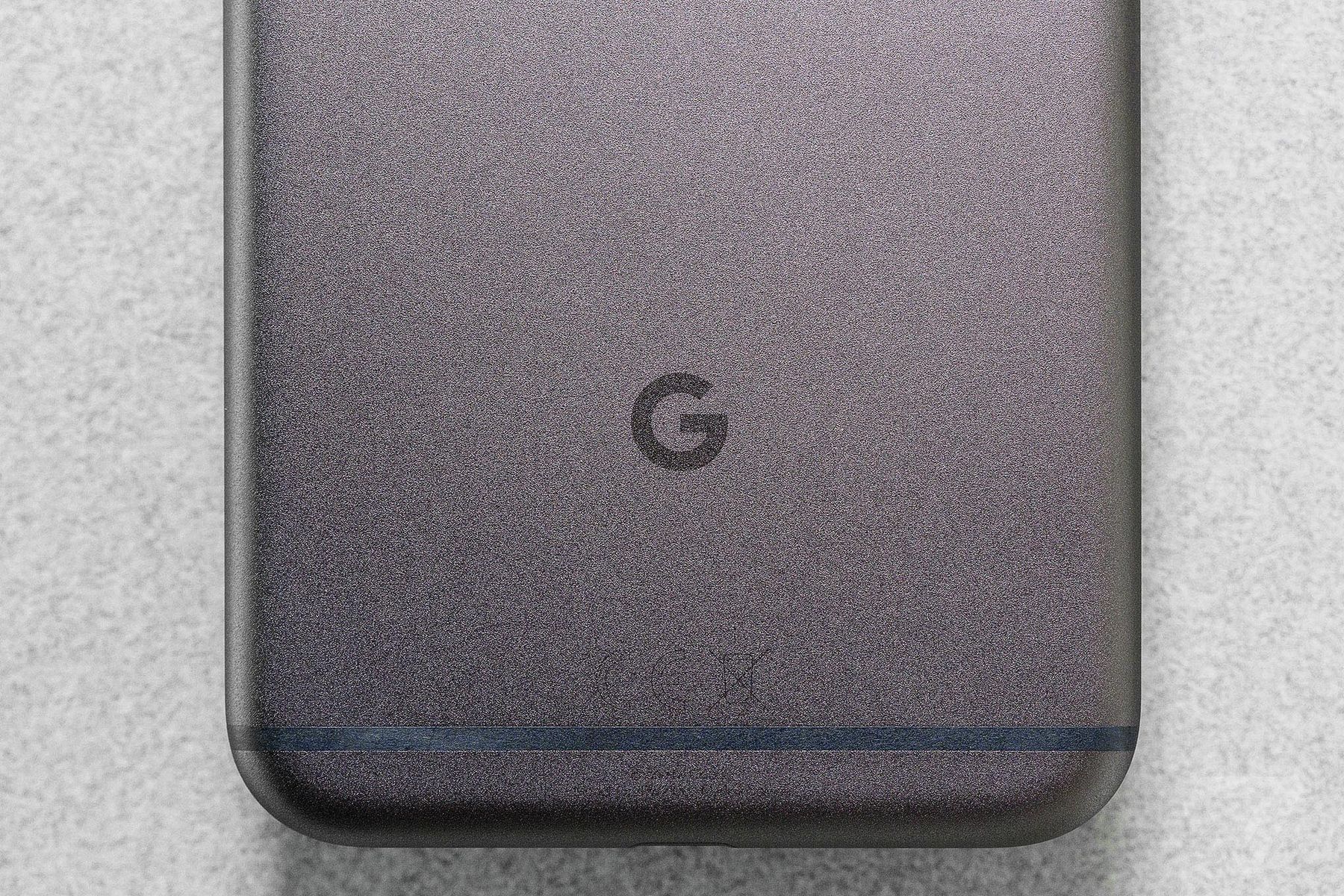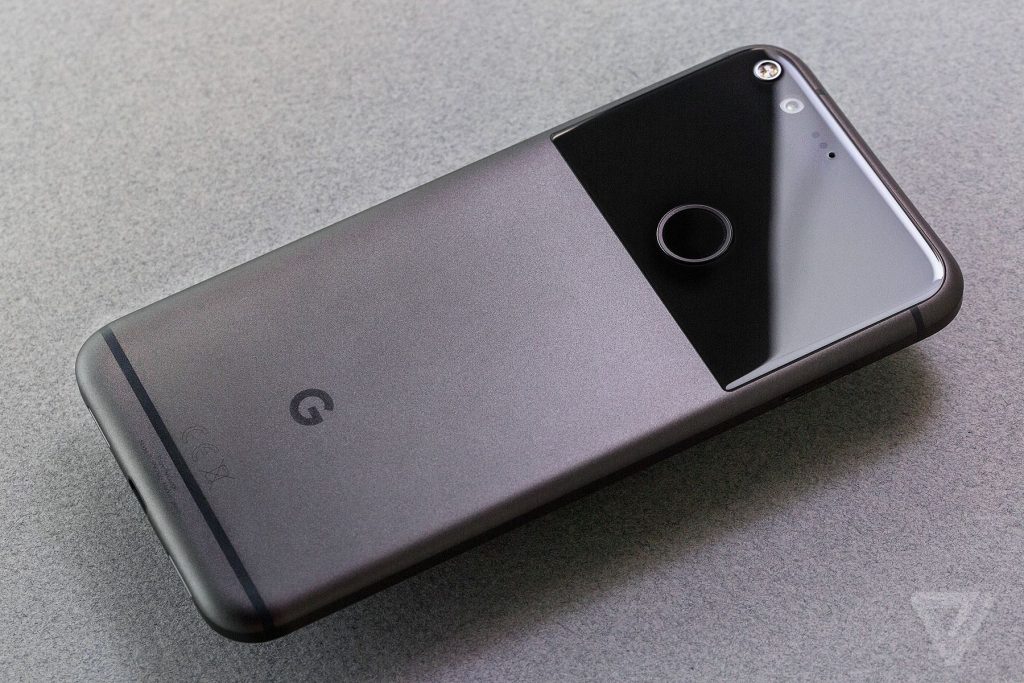The Google Phone – The inside story of Google’s bold bet on hardware


In a nationally televised commercial that premiered last month, an empty search box sitting against a stark white background slowly morphs, becoming taller and skinnier. As Redbone croons “Come and get your love,” the lines take shape and the outline of a phone emerges. It is, of course, the Pixel, a new phone “made by Google.” The metaphor damn near hits you in the face: the search box once defined Google, but now Google needs to be something more.
It needs to find what comes after that bare search box and the basic web page results it often returns. Google has been around for 18 years now and someday — perhaps soon — a better paradigm for using the internet is going to supplant the ubiquitous box. At the same time, Google has also decided it needs to become a hardware company, making its own products instead of leaving that work solely to partners.
The two needs are directly related. If something is going to replace the search box, you can be sure Google wants to create it. And it may have, with the Google Assistant — the company’s take on an AI assistant that’s powered by Google’s massive cloud infrastructure and the huge amount of data it knows about you. But even the best software is pointless without compelling hardware to run it. And if you’re Google, would you trust the future of the company to your hardware partners? No, you’d want to control the entire thing, end to end.
That’s why today Google is unveiling an entire, interconnected hardware ecosystem: two phones, an intelligent speaker, a VR headset, a Wi-Fi router, and a media-streaming dongle. And the most important parts of that ecosystem — the Pixel phone and Google Home speaker — exist to be the ideal vessels for the Google Assistant. The rest of the products fill out Google’s ecosystem, but are also enhanced by Google’s cloud-based intelligence.
In making its own hardware, Google is pitting itself against Apple for the first time, Google phone vs. iPhone. Those are very high stakes, with very little margin for error. So it looks like Google decided to follow a simple dictum: If you want something done right, you have to do it yourself

Osterloh insists that he’d like Google to be more intentional in what it produces moving forward. “It’s very challenging to work on dozens of products and make them all terrific,” Osterloh says. “We have to have a lot of discipline and a lot of focus.”
That means shuttering the Project Ara modular smartphone just three months after it was announced (Osterloh expects other companies to pick up the modular torch) and leaving the moonshots to the X division at Alphabet. Google isn’t just experimenting with hardware anymore — it knows exactly what it wants to do.
“Fundamentally, we believe that a lot of the innovation that we want to do now ends up requiring controlling the end-to-end user experience,” Osterloh says. It’s the kind of sentiment you usually hear from Apple, not Google. The company needs to absolutely nail the Google Assistant experience, and doing that meant not ceding an iota of control to partners in the first iteration. “We needed to build a system that actually ran it perfectly,” Osterloh says, referring to Google Home. “Our aim is to give our users the best possible experience.”
That total control is a radical shift for Google. Just look at the Nexus program, which was always designed as a kind of “reference platform” for other hardware manufacturers to learn what’s coming for Android. It showcased new processors, larger screens, and inexpensive designs. Sales to customers was always more of a side hustle than a core business.
“The idea was to show everyone how it should be done,” says Brian Rakowski, VP of product management for Android. “All the partners in the phone manufacturing space took it and built great products on top of it. Meanwhile, Nexus kind of trundled along at the same small scale.” Nexus phones were always built with a hardware partner — and they usually didn’t amount to much more than refinements and iterations on the hardware that partner was already making.
None of that is necessary anymore. The Nexus program has fulfilled its mission because Android manufacturers don’t need Google to show them the way. Google currently has “no plans” to ever make another Nexus device, according to a spokesperson. Hardcore Android fans may know that HTC is the “Original Device Manufacturer” for the Pixel, but Google says its phone isn’t based on any HTC phone and the “seller of record” for the phone will be Google. In other words, no more trundling along.

ust as the Nexus was becoming unnecessary, Google found itself with a more urgent need: to take Apple head-on, and position Android as an iPhone competitor in terms of sales, quality, and customer service. Enter Pixel.
Google not only designed the Pixel’s hardware — you’ll find the circular “G” logo on the back of the phone now — but also formed direct partnerships with retailers and carriers. Verizon is presumed to be the company’s exclusive US partner, though Google will sell an unlocked version of the phone in its own store, complete with optional financing. Preorders begin October 4th and it will begin shipping on October 20th.
In order to truly compete with Apple, Google will have to step up its customer support game. When something goes wrong with your iPhone, you go to the Apple Store. When you need help with the Pixel, you’ll open up the settings and hit the support tab. Google is running a 24-hour chat and phone support service — and when you call in, you can opt to show the rep your screen so they can walk you through whatever’s going wrong.
Design-wise, there’s no denying the iPhone’s influence. There are differences, of course: the bezel on the back is angled instead of curved. The fingerprint sensor is on the back, too, inside a square glass “shade” that helps you align the phone in your hand. The phone is also very slightly thicker at the top than the bottom to fit the camera without requiring a camera bump.
“We actually did a whole bunch of things to make sure that it didn’t look too much like an iPhone,” Rakowski says. But from a distance (or in a case), the similarities are unmistakable. And so is the pricing: the Pixel fits in the high-end Android market precisely where Samsung’s exploding Note 7s left a hole.
Make no mistake, the high end is where the Pixel lives. It starts at $649 for a 32GB Pixel and goes up to $869 for the larger 128GB Pixel XL. That’s likely to give people used to Nexus pricing some sticker shock, but it’s in line with Apple and Samsung phones. The components in the Pixel are expensive, Osterloh admits, and therefore the phone is, too. “We didn’t want to have any compromises in the user experience,” Osterloh says, “and so that’s why we went to the premium end.”
Osterloh knows that “We certainly aren’t going to have enormous volumes out of this product. This is very first innings for us.” Google’s metric of success for Pixel won’t be whether it picks up significant market share, but whether it can garner customer satisfaction and form retail and carrier partnerships that Google can leverage for years to come.
The phones feel premium and Google has done a lot of the work to banish the bugbears that have vexed Android users for years. The 12-megapixel camera is fast and Google claims it’s great in low-light. It got a DxOMark camera score of 89 — the best score ever given out to a phone. Though there’s no optical image stabilization, Google tied the camera to the gyroscope to eliminate the hand-shake “jelly” effect in video. It has a new Snapdragon 821 processor and 4 gigs of RAM. The camera uses lasers and phase-detection to focus, and every photo or video you take gets saved in Google’s cloud for free, at full resolution, for life.
Google also finally reworked some of the systems behind touch responsiveness on the display. Dave Burke, VP of engineering for Android, says that “touch latency [on the Pixel] is the best of any Android device ever produced. If you put it under high-speed camera, it’s on par with an iPhone.” (It still feels a little different to me, mainly because Android handles inertia a little differently than iOS).
Details like latency are precisely the kind of things that get better when you control the “end-to-end” experience. But where Google’s new “opinionated” approach really comes to the fore is in the software. The Pixel is the first (and, for now, the only) phone to support the new Pixel home screen, Daydream virtual reality, and the Google Assistant.

If the Google Assistant succeeds, it will become the next interface to computers and the internet. Hell, the division between those things might even begin to blur, abstracted underneath a helpful conversation with a capable bot.
For Scott Huffman, VP of engineering for the Google Assistant, the Assistant is important because it has the potential to change the paradigm of computing from input / output into a conversation. “The conversation is the ultimate interface that everyone from your three-year-old on up can do,” Huffman says.
Why doesn’t the Google Assistant have a name like Siri, Cortana, or Alexa? Huffman has patiently been answering that question the same way since the software was unveiled back in May. “We felt like if we named it Suzy or Johnny or something, that it would be too narrow,” he explains, “it would feel like yet another thing alongside the other things as opposed to what it’s meant to be, which is really an overlay across everything that we do.”
“We decided to go with ‘Google Assistant’ because we feel like it represents everything that Google does and Google is,” Huffman says. I’d already seen the Assistant on Allo, where it was less useful than I’d hoped. Huffman showed it to me on a Nexus 6P customized to run it (it won’t be coming to Nexus phones anytime soon). The Assistant is, in many ways, not that much different from a voice search you can do on any Android phone. You hold down the home button, ask a question, and a window slides up from the bottom with an answer. You ask the next question, and so on.
Like Siri, you can only speak to the Assistant, not type. Unlike Siri, Google’s Assistant is surprisingly intelligent. It can understand the context of what you’re asking by reading the screen. It can answer questions by reading back key sections of web pages. If you ask it for something specific that might be in an app — like “show me Beyoncé’s Instagram” — it’ll just open up Instagram and take you her account.
But where the Assistant really gets interesting is in Google Home. Google Home consists of a little speaker you put in your home that listens for you to say “OK Google” and then answers your questions. (Google insists that Home doesn’t send anything you say up to Google until it hears the keyword.) In many ways, Home is as big a bet as Pixel, and enters a sparser competitive field. Its only real competition is the Amazon Echo and compared to the Echo, Google Home has a lot of advantages. It’s cheaper, at $129, and it seems to have a higher quality set of speakers inside it, too.
It’s also smaller and cuter — you can swap out the speaker base for new ones that better match your decor. The running joke about Home is that it looks like a big air freshener, so I took the opportunity to needle Rishi Chandra, VP of product management for home products. He owned the comparison. “I’m not actually offended by that,” Chandra says. Air fresheners, he says, are “consumer goods products which are explicitly designed to be actually put out in the open inside your home,” and so is Google Home.
But what really sets Home apart is Google’s smarts. Home has only two microphones compared to the Echo’s seven, but Chandra claims it does an even better job of locating you and understanding your questions. Google uses a process Chandra calls “neural beam forming,” which takes advantage of computing in cloud to identify and process your speech. Google has “simulated hundreds of thousands of different environments — noisy environments, quiet environments — and what we’ve done is applied machine learning to it,” Chandra says. You can put multiple Homes in your house and only the closest one will respond to you — heck, if you have an Android phone, watch, and multiple Homes, Google says that it can single out the best device to listen to you by the time you finish your request, and stop the others from responding.
On Home, the Assistant really shows off how far ahead Google is compared to Alexa or Siri. You can ask it to “Play “that one song from Frozen”” and that one song will play from YouTube. You can ask it what your day looks like, and it’ll tell you what’s on your calendar, list off your reminders, the weather, and the news. You can ask it to play a YouTube video on your TV and it’ll command your Chromecast to begin playing (Google says support for more video streaming services is coming). Chandra asked Home “How do I defrost a chicken?” and Home found a relevant website and read back just the relevant text.
At launch, Home will work with a few services: YouTube, Spotify, Google Play Music, Pandora, iHeart Radio, Nest, Philips Hue, SmartThings, and a few more. You can set defaults in the Google Home app — which will also control Chromecasts. But third-party developers can’t directly get on the platform the way they can with Alexa just yet. Home mostly lives in Google’s world and, annoyingly, within one Google account at a time. Huffman promises that Google will open it up to third-party developers later this year — so the Echo has at least a few more months with a significant competitive advantage.
longside the Pixel phones and Google Home, we’re getting our first look at the devices that fill out Google’s entire ecosystem: the Daydream VR headset, a new Chromecast, and the Google Wifi home router.
Daydream isn’t launching until early November, but it’s getting its first real demo at Google’s hardware event. It’s exclusive to the Pixel for a short time and it’s certainly more approachable than other VR headsets. Made of fabric and designed to make it fast and simple to use, it’s easier to figure out than the Galaxy Gear, though of course not as powerful as an HTC Vive — you can read much more about Daydream here. The Chromecast Ultra supports 4K and HDR and even lets you use Ethernet for its connection. It’s connected to the Assistant insofar as it stands ready and waiting for Home to sling video at it.
Google Wifi is also only tangentially related to the Assistant. Google figured people need good Wi-Fi to talk to it, so it made a new router that starts at just $129. Just like Google tried working with partners for the Nexus then decided to make its own phone, Google is building its own router, too. Like the Eero, it’s designed to be used as a mesh network — you can buy a three-pack for $299, and add as many more as you like. Like Google Home, they’re designed to be inoffensive gadgets you won’t mind scattering around your house. And like the microphones on Google Home, Google Wifi takes advantage of Google’s machine learning to better manage all the devices on your network.
For example: when you’re in a typical mesh network and you wander back to your bedroom, your phone might not realize that there’s a much stronger access point it could connect to. Instead, it just stays connected to the one that’s far away. It’s the phone’s fault (though Chandra points out that iPhones are better at this than most), but the routers themselves could do a better job of making your device switch. With Wifi, Chandra says, the routers communicate with each other, so the one that’s closer is more likely to offer itself up as the better access point. “We’re targeting a 150-millisecond transition time,” Chandra says, “so if you’re doing a video chat and you’re walking all the way through, you should never see a drop.”
Google’s new batch of hardware looks like the beginning of a coherent ecosystem of products. “This is a coming-out party for us, without a doubt,” Osterloh says. Instead of experiments and references, Google wants to sell its goods in large numbers. That’s new for Google, and it puts it in a different category of competition — both with adversaries like Apple and Microsoft and with its own manufacturing partners.
Even though Google is making its own hardware, it’s not completely abandoning its partners. It will still be sharing the software and cloud intelligence it has developed with companies like Samsung and LG that can make compatible phones, speakers, and routers. But this time, Google isn’t stepping out of the sales fray like it has before. It will be competing with those partners directly. “We’re no longer going to be shy about what we think is the right answer for us,” Chandra says. “What we are going to do is give the OEM ecosystem a chance to compete, meaning it’s a fair playing field.”
Historically, that kind of direct competition between a software maker and hardware companies seemed like a recipe for conflict. But it doesn’t seem to have hurt Microsoft much with its Surface line, and Google doesn’t seem too worried that its partners will be unhappy competing with Google. “It certainly might happen as a byproduct, but our focus is absolutely on trying to drive people into the Android ecosystem,” Osterloh says, “especially at that premium tier.”
So that’s the new playbook: Google making the first version of the hardware itself and vertically integrating software and hardware to create the best possible experience. Its products sit at the high end of the market, eventually distributing its software downstream to other manufacturers.
Will it work? The only way to figure it out seems to be by trying. Chandra says that Google CEO Sundar Pichai challenged all the teams: “Let’s go prove this, can we go prove that this should be the bet that we, as a company, are going to make.”
The bet is twofold: hardware and the Assistant. Neither is proven yet, and between the two I can’t help but think that the Assistant is a more significant gamble. Is Assistant the future of what it means to “just Google it”? Huffman says that he thinks of the Assistant as “at least one of the things that has the potential to be … what Google becomes.”

